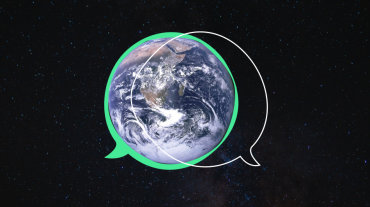Why you should care about composting — and how to get started
The food we throw away often ends up in landfills, where it releases greenhouse gases. But there’s something all of us can do today to help fix this mess: It’s called composting.
Let’s start with some mind-blowing stats: The amount of waste the world generates every year is enough to fill 822,000 Olympic-sized pools. But where does all this waste come from? In the EU and the US, bio waste — which is mainly made up of food scraps, garden waste, paper, and paperboard — is the biggest component of municipal waste.
So what happens when we dump bio waste into the general rubbish bin? Part of it is incinerated, while the rest reaches landfills, where it decomposes and releases methane, an extremely powerful greenhouse gas. This is where composting comes in — composting organic waste can drastically cut methane emissions, protect our planet, and boost soil health.

How does composting help
Composting has the power to cut 2.1 billion tons of methane emissions from landfills by 2050. What’s more, compost prevents soil erosion by adding important nutrients, balancing PH levels, and enhancing moisture infiltration and retention. Plus, it’s home to a bunch of friendly microbes that help plants absorb nutrients.
How to start composting at home
🛒
Grab a compost bin at your local gardening store. We recommend using a container specifically made for composting to maximize results and avoid bad smells or bugs.
🍌
Start adding to your compost pile! Fruit and veg, eggshells, coffee grounds, nut shells, shredded paper or cardboard, wood scraps, leaves or grass, and anything else organic can be included (but beware of exceptions, listed below!).
🍂
Always keep a good mixture of water, brown, and green materials to speed up decomposition. Brown scraps can be fall leaves, wood products, or paper, while green materials are plant or grass clippings, and most kitchen scraps. Three parts browns to one part greens is a great ratio.
✂️
Make sure you shred parts that are too large, as this will also speed up the process.
💧
Moisten dry materials slightly as you add them to the pile.
🔄
Turn the contents of your bin every 3-7 days to prevent the compost from becoming too soggy or dry.
🌱
When the compost at the bottom is dark and crumbly, and has a pleasant, earthy smell, it is finally ready to use! This can take between 4 weeks and 12 months, depending on the size of your container (the bigger, the faster), and the decomposition process.
What not to put in your compost
🐶 Animal excrement.
🔥 Coal or charcoal ash.
🥩 Fats or grease.
😷 Diseased plants.
🍵 Tea bags (tea itself is good to go though).
🏷️ Fruit labels.
🧅 Citrus peel and onions.
🐟 Meat and fish scraps, or dairy products.
What to do with your compost
If you’re lucky enough to have a garden, mix your compost into the soil and you’ll get a lush and healthy yard. Alternatively, you can add some to your indoor plants, donate it to a local farm or community garden program, or simply hand it over to the municipal compost collection service, if your town provides one.
The big picture
Bio waste doesn’t need to end up in landfills. You can be part of the change today. Now that you know the basics of composting, you can make a tangible, daily difference in the size of your emissions while promoting soil health. Want to get to the root of the problem? Just follow a few simple steps to cut food waste or start your own veggie production at home.



